Thermal imaging refers to the production of images by cameras that detect radiation in the infrared (IR) range of the electromagnetic spectrum. Infrared radiation has a wavelength longer than visible light, though shorter than that of microwaves, measuring approximately 900 to 14,000 nanometers.
Thermographic cameras produce images in a way similar to cameras that use visible light, except that visible light cameras capture wavelengths in the 450- to 750-nanometer range of the electromagnetic spectrum-wavelengths too short for thermal imaging equipment to register.
All objects emit infrared radiation, the amount of which is proportional to an object’s temperature. Thermography makes it possible to view objects by varying degrees of heat, with warmer objects rendered brighter than cooler objects.
Thermographic inspection is a form of nondestructive testing that is safe, non-intrusive and noncontact. It allows quick detection of subsurface defects a few millimeters under large surfaces. With passive thermographic inspection, features of interest are naturally at a higher or lower temperature than the background. With active thermographic inspection, an energy source is needed to produce a thermal contrast between the feature of interest and the background.
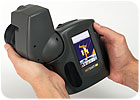
The HotShot HD weighs 2.7 pounds and has icon-based touch-screen controls, integrated inspection detail data collection and optional inspection route software. Source: Electrophysics
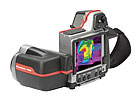
T-series cameras have 76,800 pixels, delivering four times the resolution of 160 by 120 infrared cameras. Source: FLIR Systems Inc.
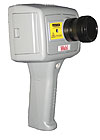
The HSI3003 offers narrow-angle 9.1-degree by 6.8-degree field-of-view optics, which enable detection and temperature measurement of small objects over long distances. Source: Palmer Wahl Instrumentation Group
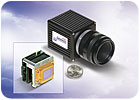
The shortwave infrared (SWIR) camera can be used to monitor a variety of hot processes and furnaces as a control of process consistency and quality. Source: Sensors Unlimited Inc.
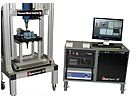
The EchoTherm VT and Flash combination compose a turbine component inspection system. Source: Thermal Wave Imaging Inc.

The TCM640 compact provides more than 300,000 noncontact temperature measurements for a given field of view. Source: Jenoptik-IR

The RAZ-IR is a full-screen radiometric thermal camera, meaning that it can measure temperature at any pixel in the image. Source: SPI Corp.
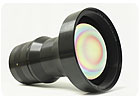
Design of lenses includes 2FOV, 3FOV, continuous zoom and catadioptric systems. Source: Janos Technology
